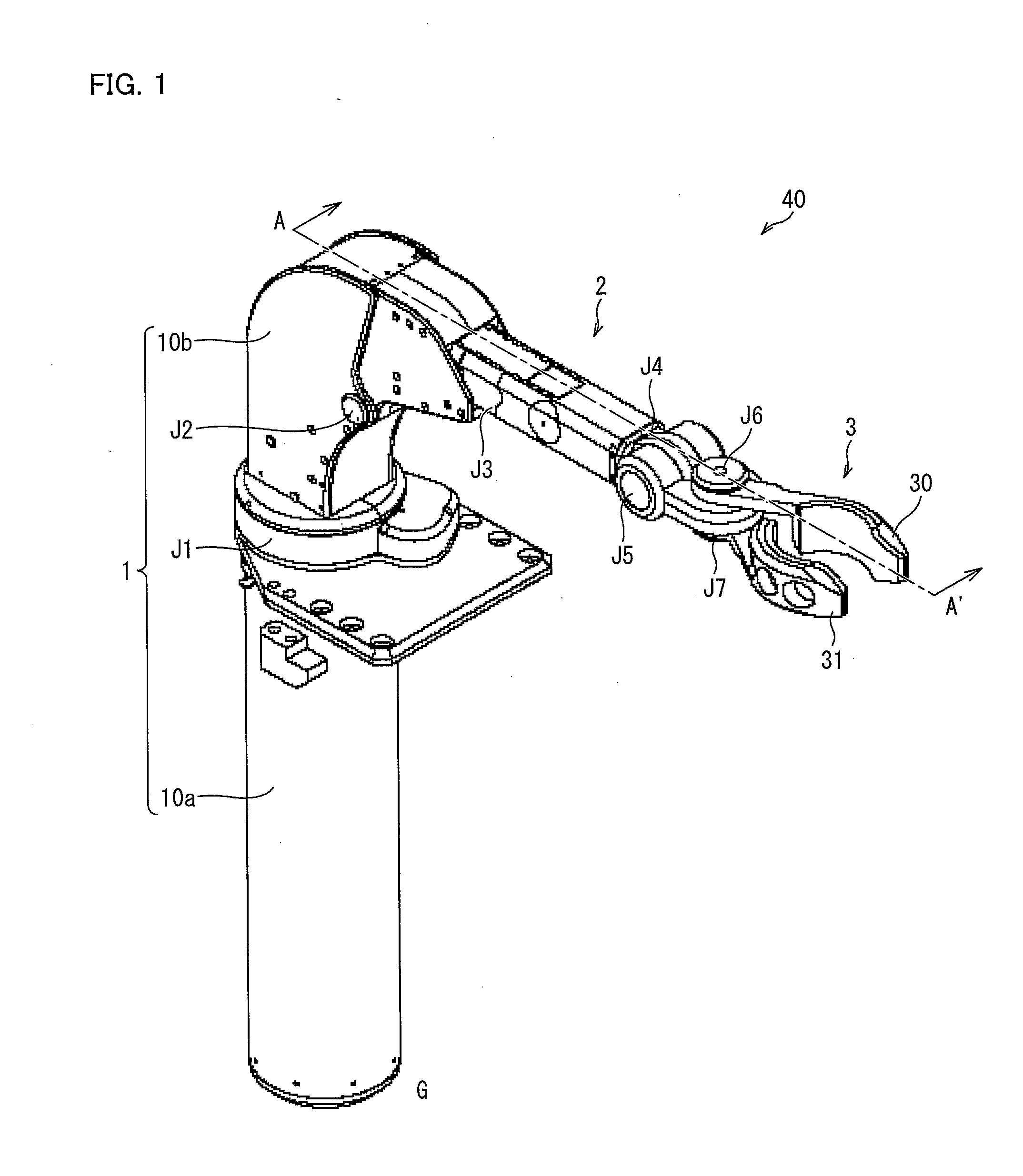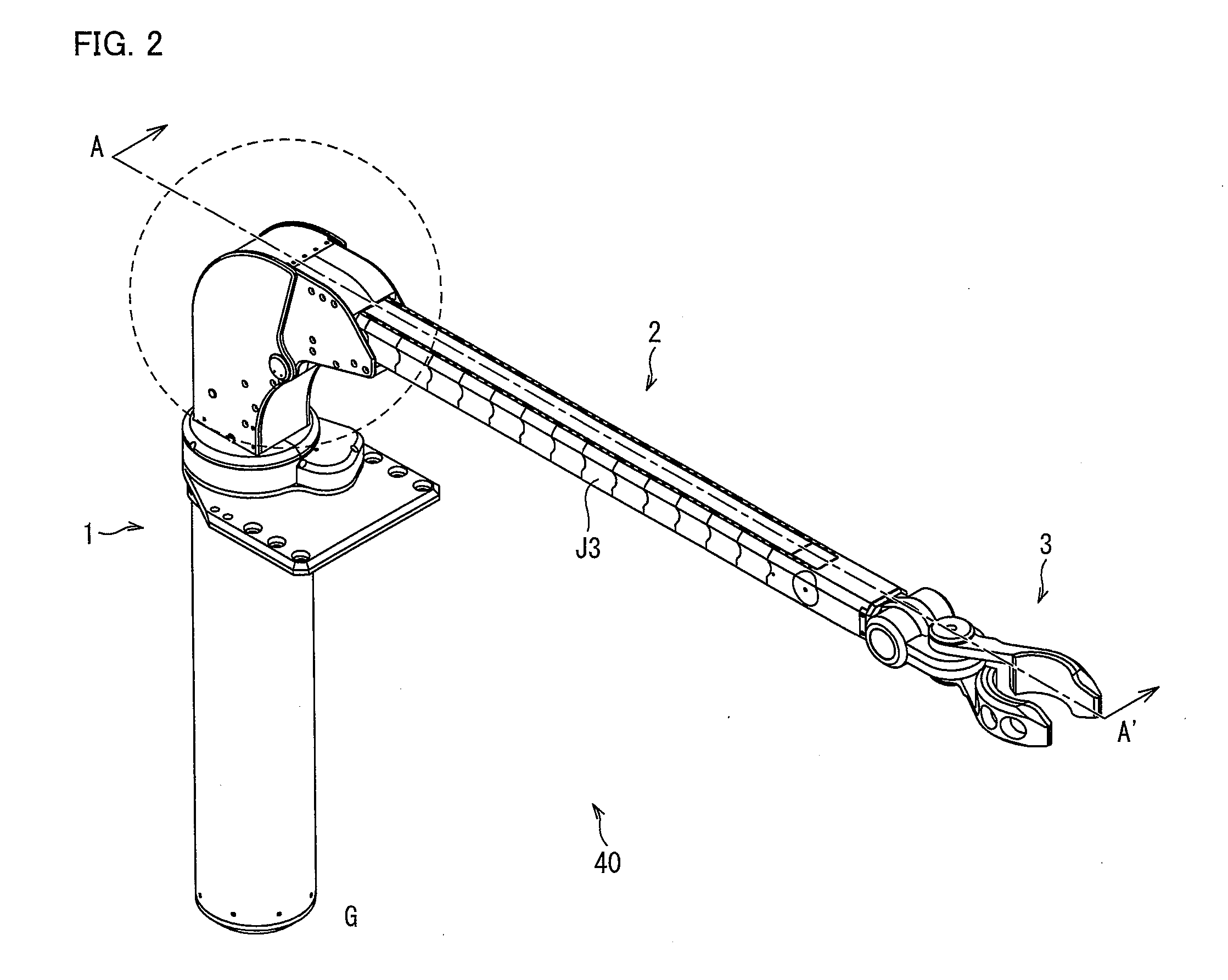Linear-motion telescopic mechanism and robot arm having linear-motion telescopic mechanism
- Summary
- Abstract
- Description
- Claims
- Application Information
AI Technical Summary
Benefits of technology
Problems solved by technology
Method used
Image
Examples
embodiment 1
[0055]A linear-motion telescopic mechanism according to the present invention includes a block-member group constituted by a plurality of block members, and moving means which moves the plurality of block members and which has a function of fixing a given block member to another block member in the block-member group and for unfixing fixed block members one by one. In the linear-motion telescopic mechanism, the moving means causes a part of or all of the plurality of block members in the block-member group to align in a linear and rigid manner to form a rigid alignment, and unfixes a part of or all of the rigid alignment to disengage the block members one by one, so that the rigid alignment serves as a linear rigid arm section that is freely variable in length.
[0056]The following describes the linear-motion telescopic mechanism according to the present invention more specifically, by referring to a robot arm as one embodiment, based on FIG. 1 to FIG. 15. For convenience for explanat...
embodiment 2
[0096]A robot arm of the present invention includes: an installation section to be fixed on a desk, a floor, or the like; a support member connected to the installation section via a rotatable first rotational joint; a straight-link arm section connected to the support member via a second rotational joint, which is rotatable in a vertical direction to a rotational direction of the first rotational joint; and an end effector provided at an end of the arm section, and the arm section having a linear-motion telescopic mechanism, (i) which allows the arm section to be elongated or contracted to an arbitrary arm length and (ii) which is constituted by structural members provided in advance to achieve a maximum arm length, the linear-motion telescopic mechanism being arranged to separate, from the arm section, a part of the structural members that is beyond the arbitrary arm length and to house the part into a space deviating from a central axis of the arm section along an elongate direct...
PUM
 Login to View More
Login to View More Abstract
Description
Claims
Application Information
 Login to View More
Login to View More - R&D
- Intellectual Property
- Life Sciences
- Materials
- Tech Scout
- Unparalleled Data Quality
- Higher Quality Content
- 60% Fewer Hallucinations
Browse by: Latest US Patents, China's latest patents, Technical Efficacy Thesaurus, Application Domain, Technology Topic, Popular Technical Reports.
© 2025 PatSnap. All rights reserved.Legal|Privacy policy|Modern Slavery Act Transparency Statement|Sitemap|About US| Contact US: help@patsnap.com



